
The operation of Skylab was divided into four main missions called Skylab 1 to 4. Skylab 1 involved the launch into orbit of the main components already integrated into the complete station, the overall control of the station in orbit and its de-orbit and destruction. Skylab 2, 3 and 4 involved the occupation and use of the station by three groups of astronaut crews. A proposed Skylab 5 mission and a standby rescue mission were not flown.
Although Skylab was in orbit for over six and a half years, it was only occupied for the first six months after launch. The three visiting crews stays did not overlap with about one month between the return of a crew and the launch of the next.
Skylab was designed for long durations to prove that humans could live and work in space for extended periods, and to expand the knowledge of solar astronomy beyond Earth-based observations. The program was successful in all respects despite early mechanical difficulties.
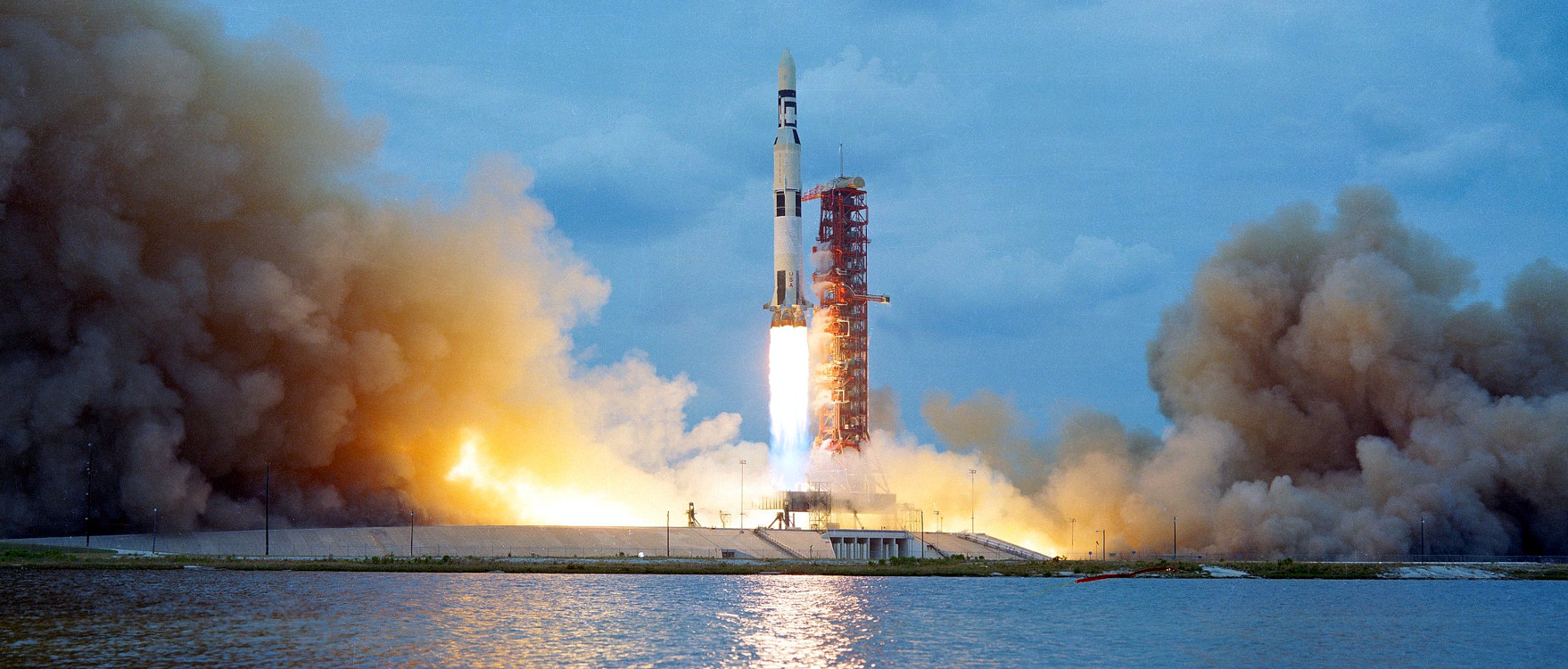
Skylab References: Wikipedia | NASA | Historic Spacecraft | Encyclopedia Astronautica
The following table lists some general statistics for the Skylab operational missions.
A fourth crewed mission, Skylab 5, was planned but cancelled before launch. The spacecraft and carrier rocket designated for this mission was then kept on standby for a possible rescue mission in case of failure of the craft at the station.
| Statistics | Skylab | |||
| Module | Crew Missions | |||
| 1 | 2 | 3 | 4 | |
| Launch Date | May 14 1973 | May 25 1973 | Jul 28 1973 | Nov 16 1973 |
| Return Date | Jul 11 1979 | Jun 22 1973 | Sep 25 1973 | Feb 8 1974 |
| Days in Orbit | 2,249 | 28 | 60 | 84 |
| Number of Orbits | 34,981 | 404 | 858 | 1,214 |
| Perigee Alt. (km) | 434 | 428 | 423 | 422 |
| Apogee Alt. (km) | 442 | 438 | 441 | 437 |
| Number of Crew | 0 | 3 | 3 | 3 |
| Spacecraft | Skylab | Apollo CSM-116 | Apollo CSM-117 | Apollo CSM-118 |
| Carrier Rocket | Saturn V AS-513 | Saturn IB SA-206 | Saturn IB SA-207 | Saturn IB SA-208 |
Details of the missions and use of the station are given in the sections below.
Skylab 2 Mission ▽ | Skylab 3 Mission ▽ | Skylab 4 Mission ▽ | Skylab Experiments ▽
Skylab 2 (also SL-2 and SLM-1), the first crewed mission to Skylab, carried three NASA astronauts on an Apollo Command and Service Module (CSM) to the station on May 25, 1973. The name Skylab 2 also refers to the CSM used for that mission. The mission lasted for 28 days in orbit with the crew returning safely to Earth on June 22, 1973.
The Skylab 2 mission established a twenty-eight-day record for human spaceflight duration and its crew was the first space station occupants ever to return safely to Earth.
Skylab 2 References: Wikipedia
The Skylab station suffered significant damage during its launch. Its micrometeorite shield, and one of its primary solar arrays had torn loose and the remaining primary solar array was jammed. The shield was also designed to provide thermal protection. Without it the temperatures inside Skylab released toxic materials into the station's atmosphere and endangered on-board film and food.
The first crew therefore had to train practicing repair techniques and ground controllers purged the atmosphere with pure nitrogen four times, before refilling it with the nitrogen/oxygen atmosphere for the crew.
When Skylab 2 reached the station the CSM was flown around it to inspect the damage. After a brief soft-docking with the station the CSM was positioned next to the jammed solar panel. The crew, during a spacewalk from the capsule hatch, attempted unsuccessfully to free the panel using a hooked pole.
The crew then had problems hard-docking the CSM to the Station. It required another spacewalk by the crew to fix the problem and finally securely dock with the station. Once inside the station, the crew deployed a collapsible parasol through the small scientific airlock to act as a sunshade and drop the inside temperatures to sustainable levels.
Two weeks later two crew performed another spacewalk to successfully free the stuck solar panel and increasing the electrical power to the workshop. Without power from the panel, the subsequent Skylab missions would have been unable to perform their main experiments, and the station's critical battery system would have been seriously degraded.
For nearly a month the crew made further repairs to the workshop, conducted medical experiments, gathered solar and Earth science data, and performed a total of 392 hours of experiments. The mission tracked two minutes of a large solar flare with the Apollo Telescope Mount; they took and returned some 29,000 frames of film of the sun.
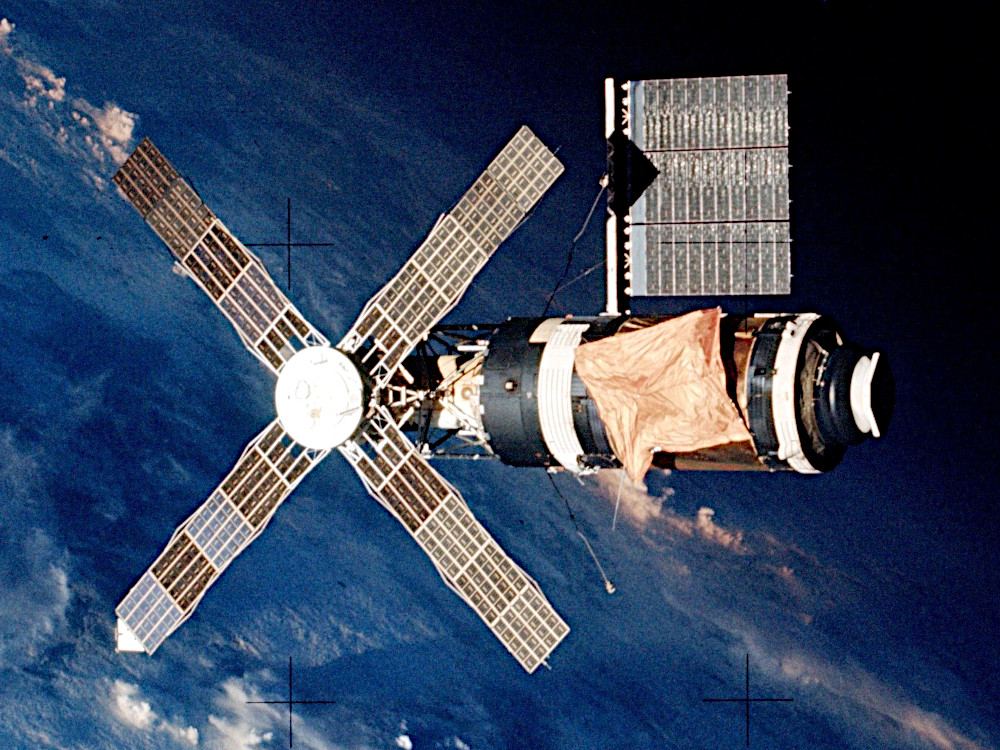
The astronauts spent 28 days in space, twice the U.S. record. The mission ended on June 22, 1973, when Skylab 2 splashed down in the Pacific Ocean.
This mission set the records for the longest duration crewed spaceflight, greatest distance traveled and greatest mass docked in space.
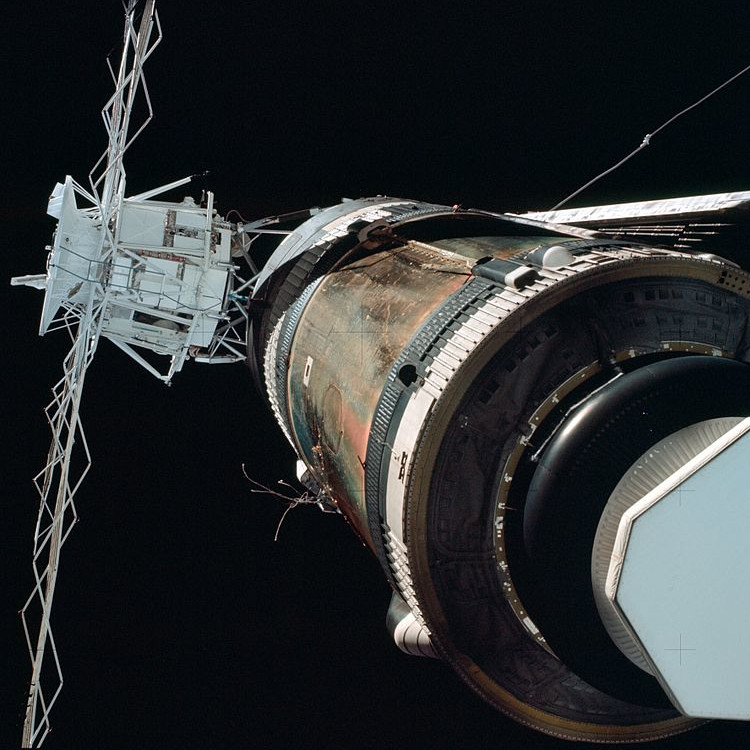
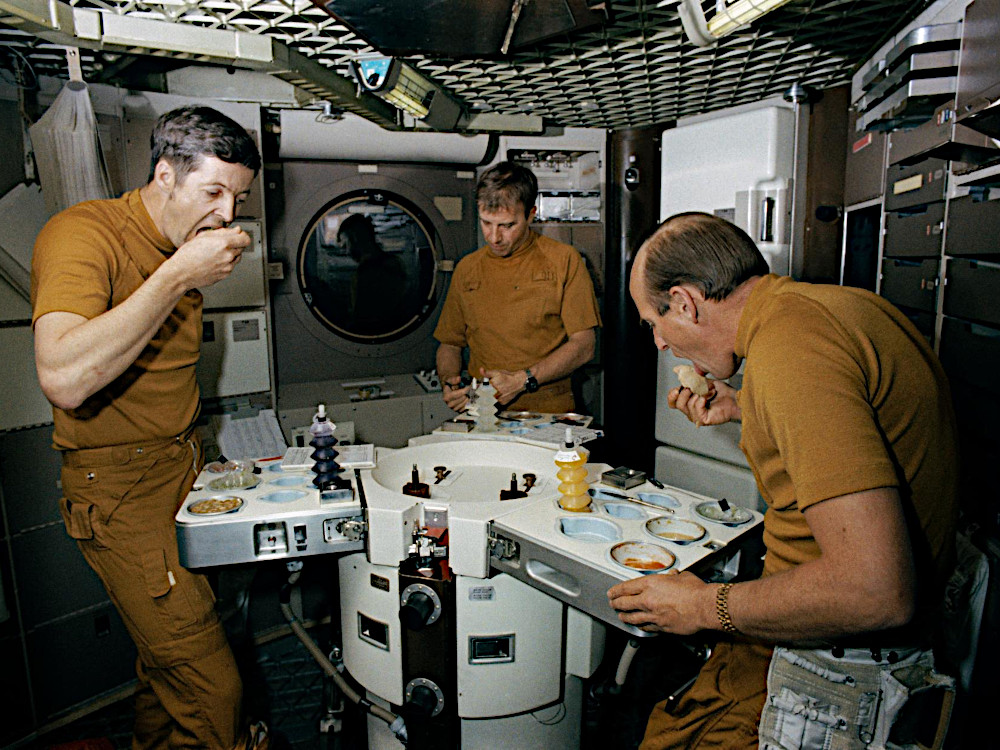
Skylab 3 (also SL-3 and SLM-2), the second crewed mission to Skylab, carried three NASA astronauts on an Apollo Command and Service Module (CSM) to the station on July 28, 1973. The name Skylab 3 also refers to the CSM used for that mission. The mission lasted for 60 days in orbit with the crew returning safely to Earth on September 25, 1973.
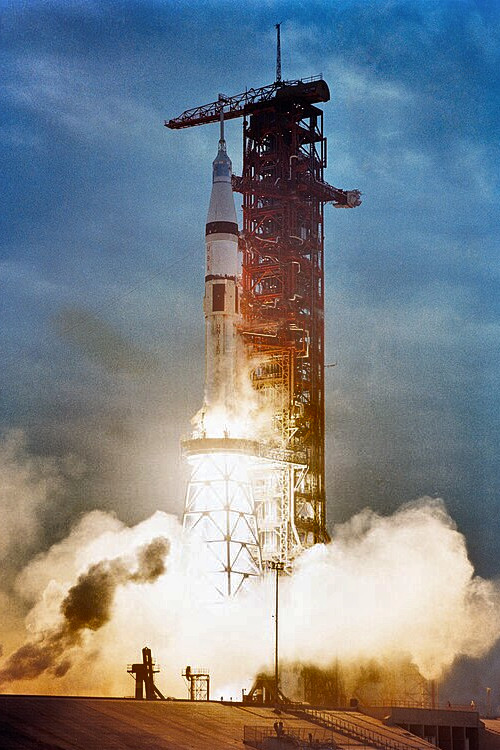
During the mission the crew performed scientific experiments in the areas of medical activities, solar observations, Earth resources.
Skylab 3 References: Wikipedia
While approaching Skylab a propellant leak developed in one of the Apollo Service Module's reaction control system thruster quads. The crew was able to safely dock with the station, but six days later, another thruster quad developed a leak.
For the first time, an Apollo spacecraft was rolled out for Skylab Rescue. This was possible because the station had a multiple docking adapter to allow two Apollo CSMs to dock at the same time.
It was eventually determined that the CSM could be safely maneuvered using only two working thruster quads, and the rescue mission was never launched.
Skylab 3 continued a comprehensive medical research program on human physiological adaptation to space flight that had begun on the Skylab 2 mission. In addition, Skylab 3 extended the astronauts' stay in space from approximately one month to two months. In-flight torso and limb girth measurements, arterial blood flow measurements, venous compliance, hemoglobin, urine specific gravity, and urine mass measurements gathered more data on the apparent headward fluid shift.
The crew's health was assessed by collecting data on dental health, environmental and crew microbiology, radiation, and toxicological aspects of the orbital workshop. Other assessments were made of astronaut maneuvering equipment and of the habitability of the crew quarters. Crew activities/maintenance experiments were examined to better understand the living and working aspects of life in space. Biological experiments studied the effects of microgravity on mice, fruit flies, single cells and cell culture media. Human lung cells were flown to examine the biochemical characteristics of cell cultures in the microgravity environment.
High school students from across the United States participated in the Skylab missions as the primary investigators of experiments that studied astronomy, physics, and fundamental biology. The student experiments included the study of libration clouds, X-rays from Jupiter, in-vitro immunology, spider web formation, cytoplasmic streaming, mass measurement, and neutron analysis.
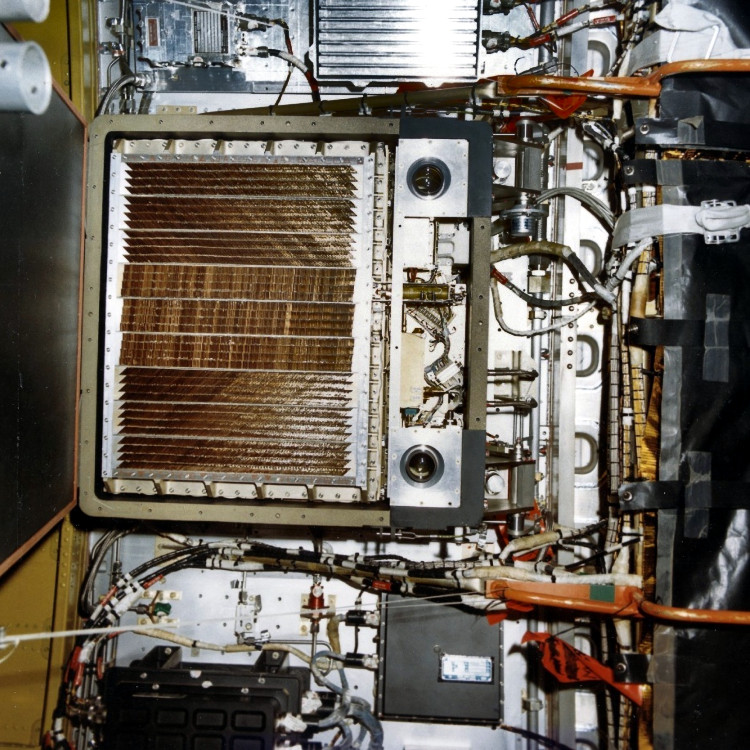
The S150 X-ray astronomy satellite experiment was designed to look for soft galactic x-rays. S150 had a large soft x-ray detector, and was mounted atop the Saturn S-IVB upper stage.
The S150 experiment had its own protective housing and was deployed on 28 July 1973 after the Apollo capsule separated from the S-IVB stage.
It flew behind and below Skylab and ran for 5 hours while its batteries lasted. It measured half of the sky, recorded data on a tape recorder and sent it to ground stations when available.
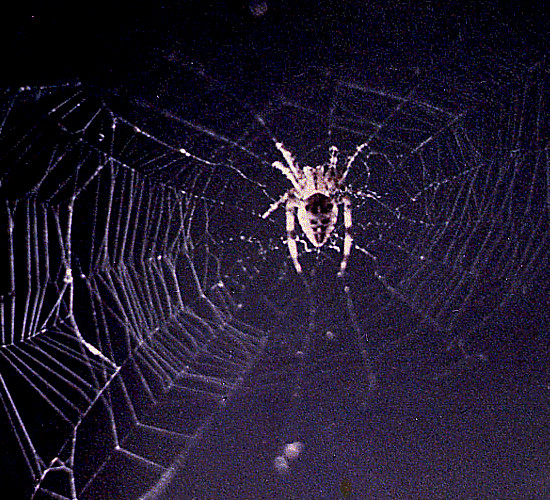
Spider webs were spun by two female European garden spiders, called Arabella and Anita, as part of the experiment to test whether spiders would spin webs in space. The spiders were released into a box that resembled a window frame and proceeded to construct their web while a camera took photographs.
The webs were finer overall, and had variations in thickness which was different to the uniform thickness on Earth. Later experiments indicated that having a light source could orient the spiders and enable them to build their normal asymmetric webs and that gravity was not a factor.
Skylab 4 (also SL-4 and SLM-3), the third and last crewed mission to Skylab, carried three NASA astronauts on an Apollo Command and Service Module (CSM) to the station on November 16, 1973. The name Skylab 4 also refers to the CSM used for that mission. The mission lasted for 84 days in orbit with the crew returning safely to Earth on February 8, 1974.
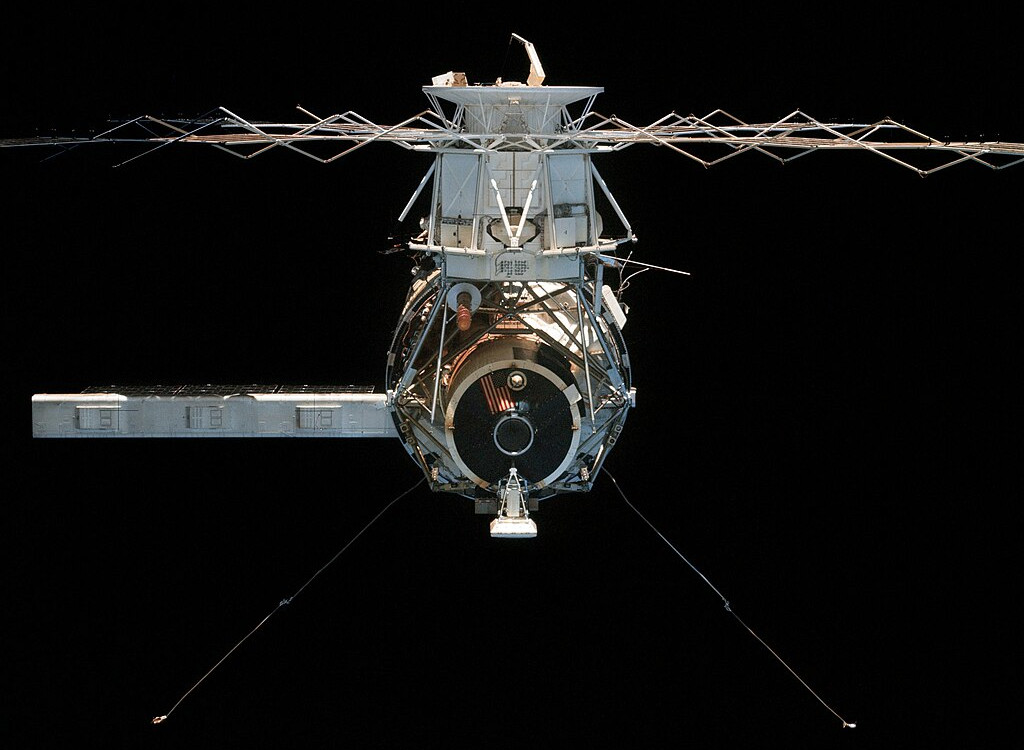
The Skylab 4 mission was a human spaceflight record that was not exceeded for over two decades by a NASA astronaut. The 96-day Soviet Salyut 6 EO-1 mission broke Skylab 4's record in 1978.
It was the first time in space for all three Skylab 4 crew. They had problems adjusting to the same workload level as their predecessors when activating the workshop and unloading and stowing the thousands of items needed for their lengthy mission. During the mission the crew performed scientific experiments in the areas of medical activities, solar observations, Earth resources and observation of the Comet Kohoutek.
Skylab 4 References: Wikipedia
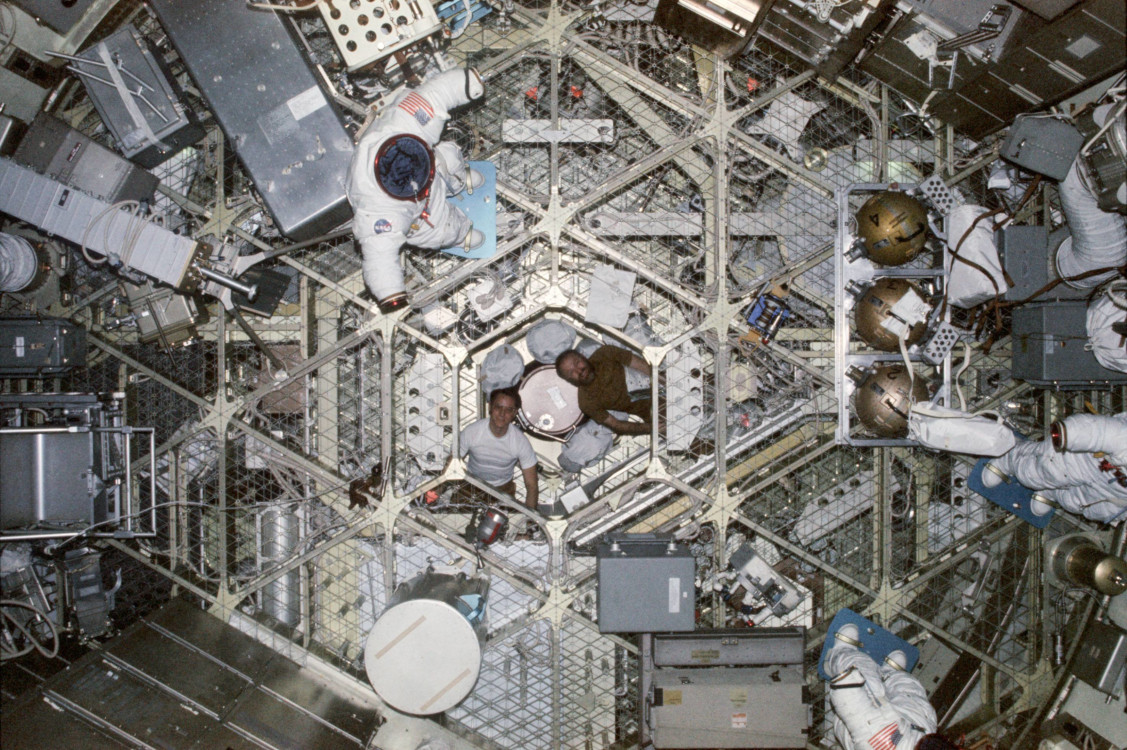
Seven days into their mission, a problem developed in the Skylab gyroscopic attitude control system, which threatened to bring an early end to the mission. Skylab depended upon three large gyroscopes, sized so that any two of them could provide sufficient control and maneuver Skylab as desired. The third acted as a backup in the event of failure of one of the others.
The gyroscope failure was attributed to insufficient lubrication. Later in the mission, a second gyroscope showed similar problems, but special temperature control and load reduction procedures kept the second one operating, and no further problems occurred.
An unplanned communications break occurred during the mission when forgot to turn their radios for the scheduled daily briefing. By the next planned period, the crew had reaffirmed radio contact with ground control. NASA agreed to assign the crew a more relaxed schedule, and productivity for the remaining mission significantly increased, surpassing that of the prior Skylab 3 mission.
The incident took NASA into an unknown realm of concern in the selection of astronauts, still a question as humanity considers human missions to Mars or returning to the Moon. Among the complicating factors was the interplay between management and subordinates.
The final Skylab mission became known for the incident, and also known for the large amount of work that was accomplished in the long mission. One of the impacts of the incident is the requirement that at least one member of the International Space Station crew be a space veteran (not be on a first flight).
The crew spent many hours studying the Earth, operating the sensing devices which measured and photographed selected features on the Earth's surface. They also made solar observations, recording about 75,000 new telescopic images of the Sun. Images were taken in the X-ray, ultraviolet, and visible portions of the spectrum.
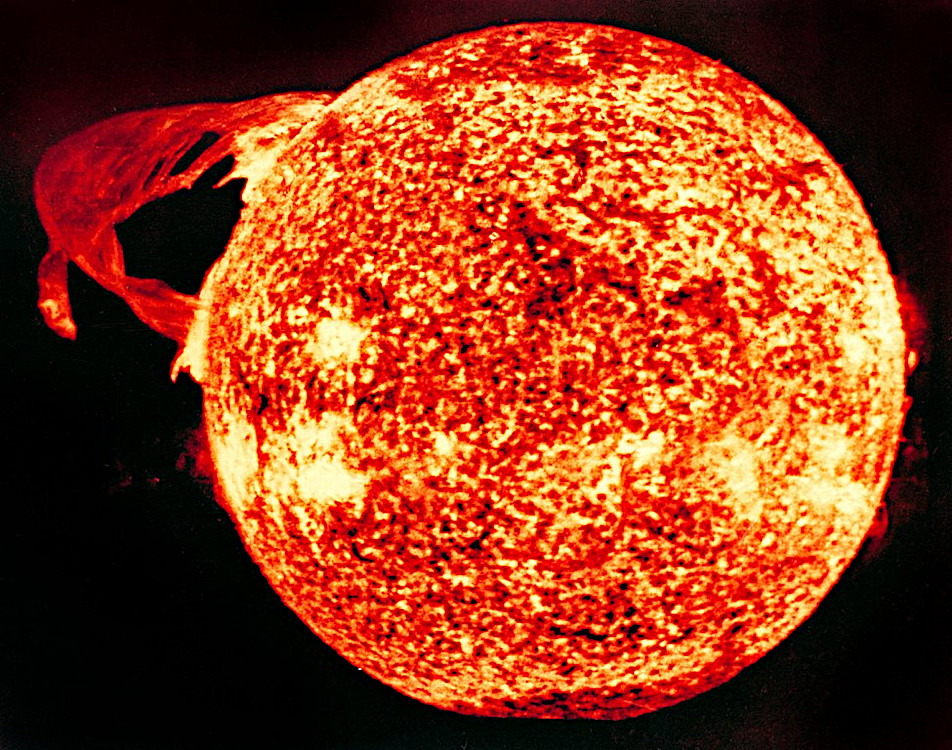
On January 21, 1974, an active region on the Sun's surface formed a bright spot which intensified and grew. The crew filmed the sequence as the bright spot erupted. This film was the first recording from space of the birth of a solar flare.
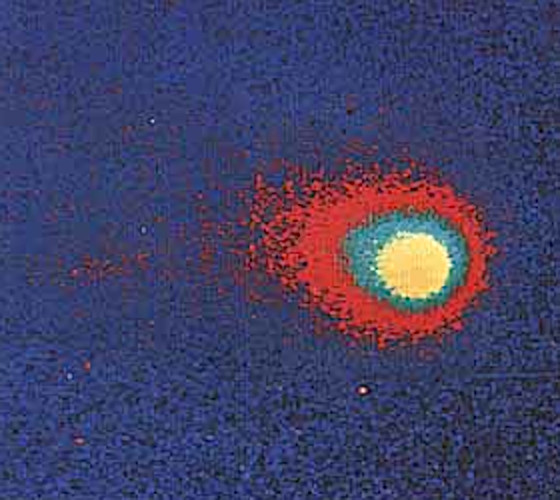
On December 13, the crew sighted Comet Kohoutek and trained the solar observatory and hand-held cameras on it. They gathered spectra on it using the Far Ultraviolet Camera/Spectrograph.
About 80 experiments, including almost 300 separate investigations were planned for skylab. These were divided into the following categories:
1. Life science - Human physiology, biomedical research; circadian rhythms (mice, gnats).
2. Solar physics and astronomy - Sun observations (eight telescopes and separate instrumentation); Comet Kohoutek (Skylab 4); stellar observations; space physics.
3. Earth resources - Mineral resources; geology; hurricanes; land and vegetation patterns
4. Material science - Welding, brazing, metal melting; crystal growth; water / fluid dynamics.
5. Student research - Nineteen different student proposals. Several experiments were commended by the crew, including a dexterity experiment and a test of web-spinning by spiders in low gravity.
6. Other - Human adaptability, ability to work, dexterity; habitat design/operations.
Unfortunately one of the two research airlocks, the solar scientific airlock, was occupied by the "parasol" that replaced the missing meteorite shield. A few experiments, therefore, were installed outside with the telescopes during spacewalks or shifted to the Earth-facing scientific airlock.
The Skylab 2 mission spent less time than planned on most experiments due to station repairs. The Skylab 3 and 4 missions, however, far exceeded the initial experiment plans.
The Skylab crew practiced flying the Automatically Stabilized Maneuvering Unit (ASMU) inside the dome of the Orbital Workshop. The unit was designed to enable astronauts to perform untethered movements in microgravity.
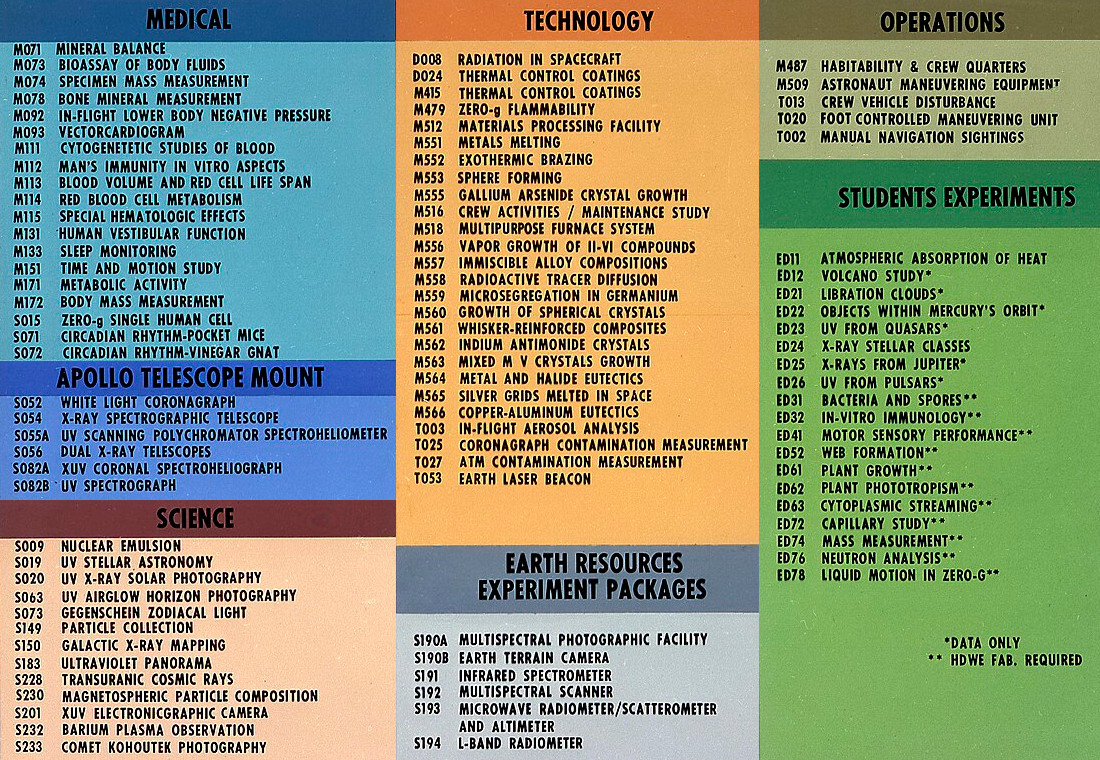
The ASMU tests established key piloting characteristics and were used as a base for the The Manned Maneuvering Unit (MMU) systems used for spacewalks from the Space Shuttle.
Riccardo Giacconi shared the 2002 Nobel Prize in Physics for his study of X-ray astronomy. These included studies from Skylab of emissions from the Sun which contributed to the birth of X-ray astronomy.